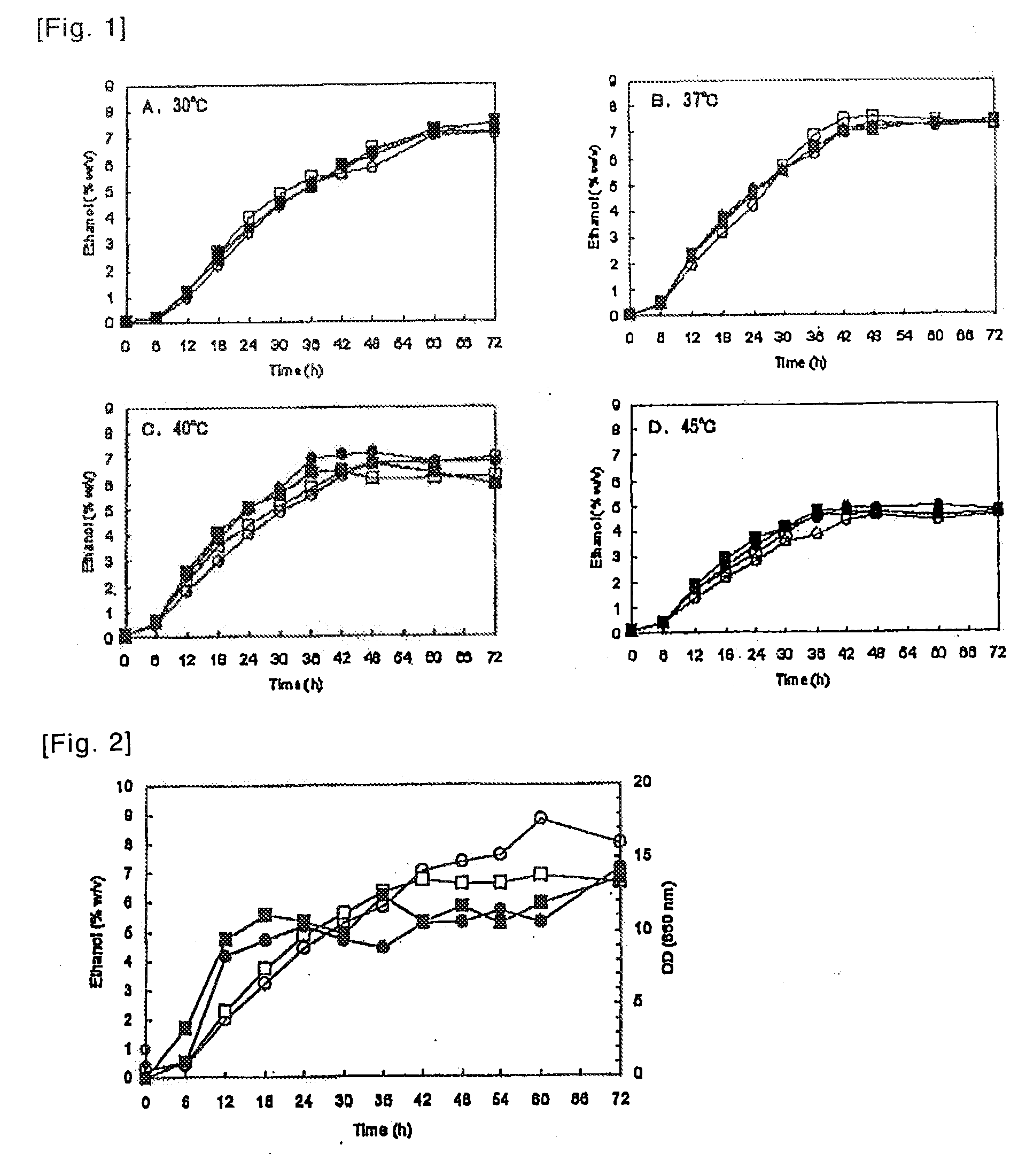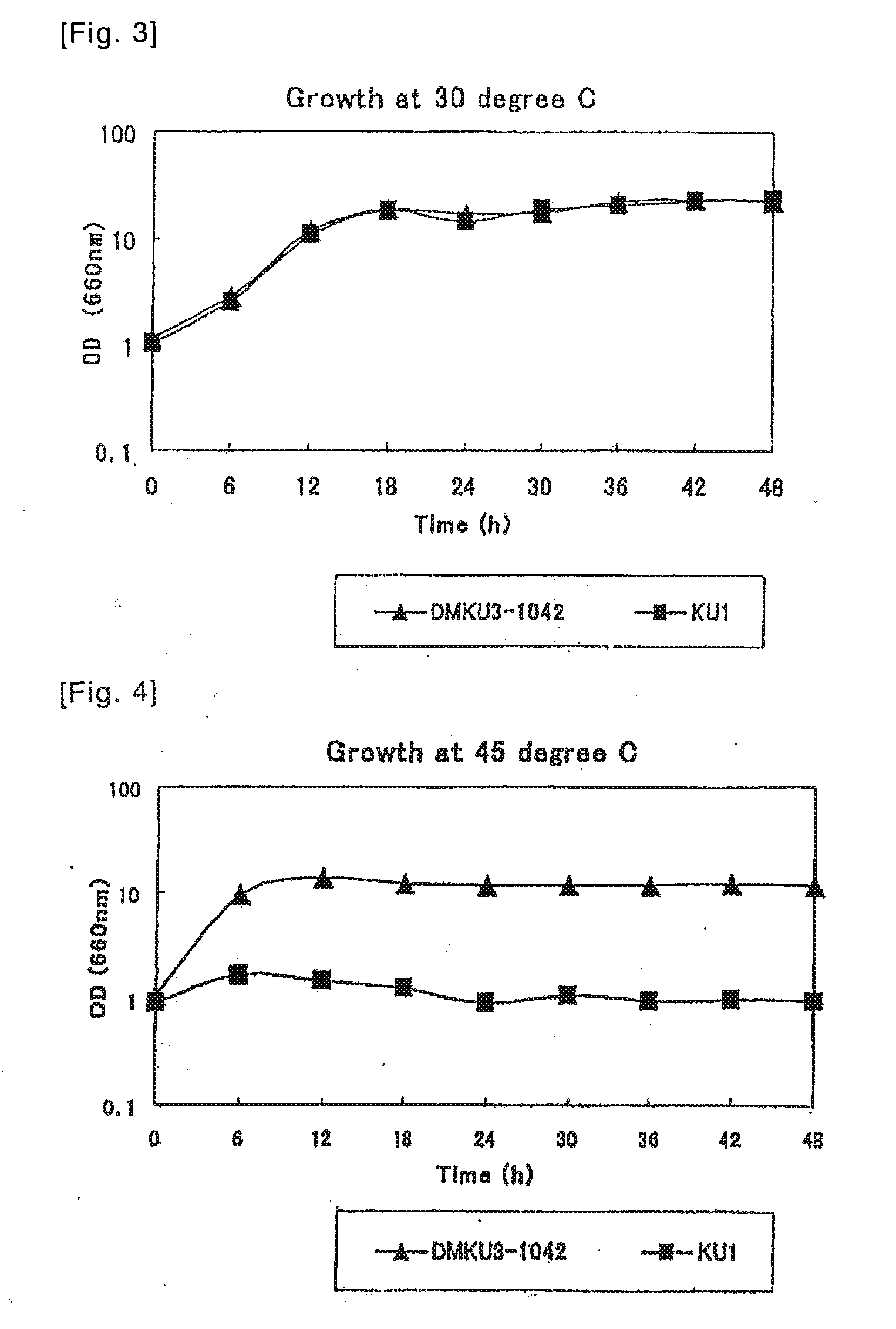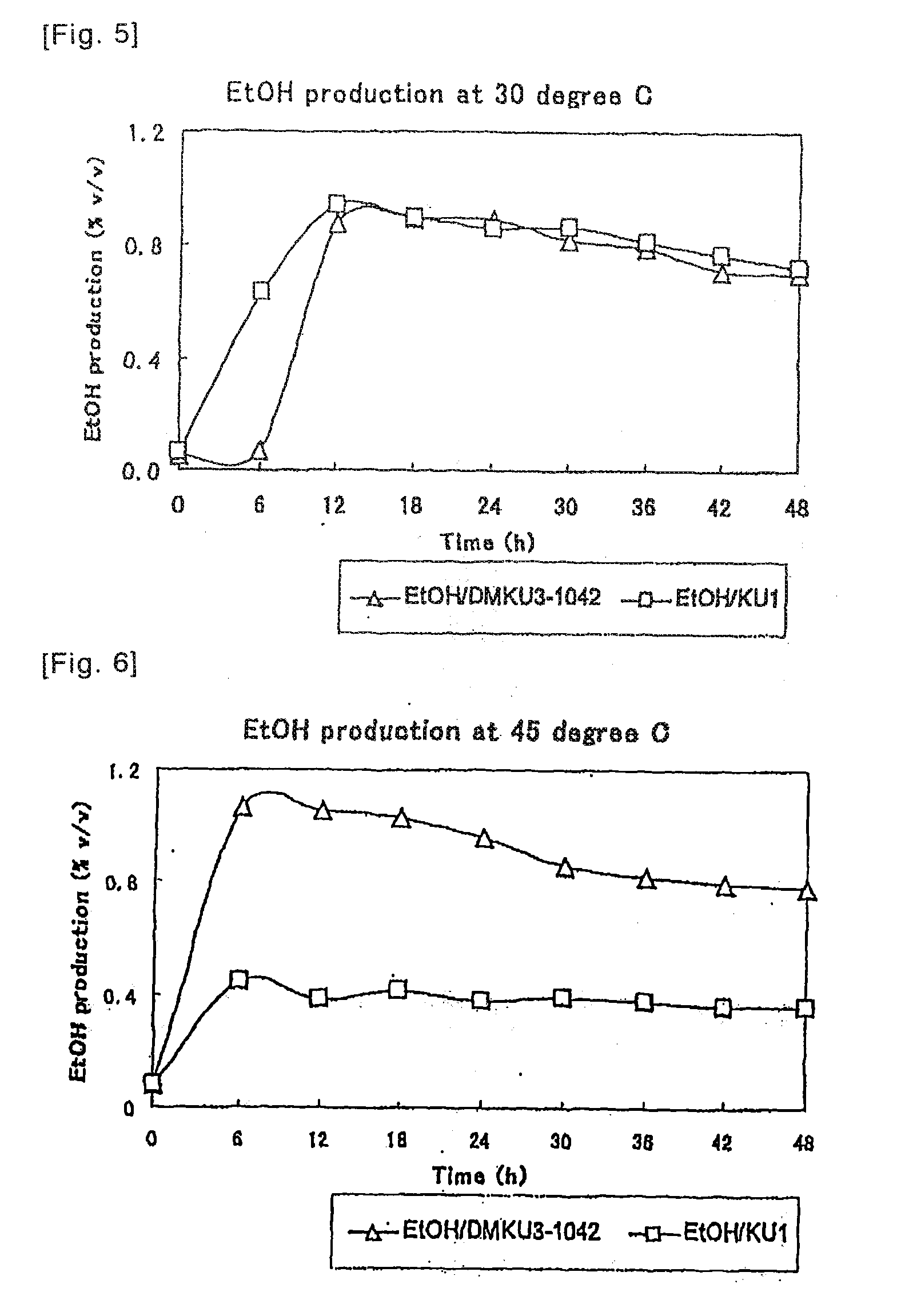Thermotolerant ethanol-producing yeast and ethanol production method utilizing the same
- Summary
- Abstract
- Description
- Claims
- Application Information
AI Technical Summary
Benefits of technology
Problems solved by technology
Method used
Image
Examples
example 1
Isolation of a Thermotolerant Microorganism from the Field
[0051]Soil samples and water samples were collected from sugarcane plantations and sugar refining factories in 4 regions of Kingdom of Thailand, i.e. Phra NakhonSi Ayutthaya, Ratchaburi, Suphanburi, and Uthaithani. These samples were added into a sugarcane juice culture solution (5 to 8% total sugars) containing 0.05% ammonium sulfate and 4% ethanol (v / v), and the mixture was cultured in a shaking apparatus (Gallenkamp Orbital Incubator, Leicester, UK) at 170 rpm under a temperature condition of 35° C., for 3 days. 3 days later, a portion of the culture solution (including microorganisms) was inoculated on an agar medium having the same composition and cultured at 35° C. 72 colonies of yeast which have appeared on the agar medium were picked up and transferred on a YPD agar medium (1% yeast extract, 2% peptone, 2% glucose, 2% agar), and stored at 8° C.
Screening of Thermotolerant Yeasts
[0052]Thermotolerant ethanol-producing s...
example 2
Examination of Ethanol-Producing Ability—200 ml Scale
[0054]The ethanol-producing ability of the above 55 strains was investigated in a 500 ml size flask, firstly, for the temperature condition by using 200 ml of sugarcane juice culture solution (total sugar concentration 8%; ammonium sulfate concentration 0.05%; pH 4.5). The yeast strains were inoculated in the culture solution and cultured by shaking at 110 strokes / min using Reciprocating water bath shaker (Model R76, New Brunswick Scientific, USA).
[0055]FIG. 1 shows the ethanol-producing ability of these 4 strains under respective temperature conditions. Each graph shows the ethanol-producing ability of each strain (DMKU3-p1042=◯; DMKU3-1042=; DMKU3-p106=□; DMKU3-118=▪) at 30° C., 37° C., 40° C., and 45° C., respectively, and the change of ethanol concentration (vertical axis; %, w / v) in the culture solution over time is shown (horizontal axis; time from the initiation of the culture). The condition of the culture solution was as...
example 3
Examination of Ethanol-Producing Ability—3 l Scale
[0069]In order to investigate the ethanol-producing ability of DMKU 3-1042 strain at 37° C. in a 5 l-size culture vessel, 3 l of sugarcane juice culture solution (total sugar concentration 22% by adding sucrose; ammonium sulfate concentration 0.05%; phosphoric acid-potassium concentration 0.05%; magnesium sulfate heptahydrate concentration 0.15%; pH 5.0) was prepared. Further, in order to examine the effect of shaking and aeration in a large-scale culture, culture was performed with the following 4 conditions:
[0070](1) shaking at 300 rpm (round per minute) only
[0071](2) shaking at 300 rpm and aeration at 0.2 vvm (vessel volume per minute)
[0072](3) shaking at 300 rpm, and aeration at 0.2 vvm for the first 12 hours
[0073](4) shaking at 300 rpm and aeration at 0.2 vvm for the first 12 hours, and shaking at 150 rpm only thereafter
[0074]The ethanol-producing ability for each of these conditions are compared and showed in the following Tab...
PUM
| Property | Measurement | Unit |
|---|---|---|
| Temperature | aaaaa | aaaaa |
| Temperature | aaaaa | aaaaa |
| Temperature | aaaaa | aaaaa |
Abstract
Description
Claims
Application Information
 Login to View More
Login to View More - R&D
- Intellectual Property
- Life Sciences
- Materials
- Tech Scout
- Unparalleled Data Quality
- Higher Quality Content
- 60% Fewer Hallucinations
Browse by: Latest US Patents, China's latest patents, Technical Efficacy Thesaurus, Application Domain, Technology Topic, Popular Technical Reports.
© 2025 PatSnap. All rights reserved.Legal|Privacy policy|Modern Slavery Act Transparency Statement|Sitemap|About US| Contact US: help@patsnap.com



